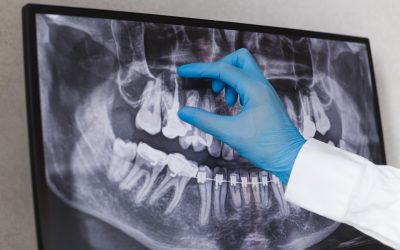Navigating the world of dental care can be confusing, especially when it comes to orthodontic treatment. One common question that arises is can you go to an orthodontist without a referral from a general dentist? Understanding the referral process and the circumstances under which it might be required will help individuals make informed decisions about their orthodontic care.
You might be surprised, but a referral is not required to consult with an orthodontist in most cases. Often, people can take charge of their oral health by scheduling an appointment for an orthodontic consultation themselves. However, it is necessary to note that some orthodontists may require a referral from a general dentist before beginning treatment.
While an initial consultation might not necessitate a referral, it is always a good idea to consult with your general dentist to discuss your treatment options and any potential referrals. Understanding the ins and outs of this process will ensure a smooth experience for those seeking orthodontic treatment.
Understanding Orthodontist Referrals
Reasons for a Referral
There are various reasons why a general dentist might refer a patient to an orthodontist. These specialists are highly trained to diagnose and treat dental and facial irregularities like misaligned teeth, overcrowding, and jaw problems. Referrals may be made for both adults and children, with the American Association of Orthodontists recommending that children first visit an orthodontist by age seven, even if there are no apparent concerns with their teeth.
A referral might be made in cases where:
-
- The patient has an overbite, underbite, or crossbite
- There is significant crowding or spacing between teeth
- The patient experiences difficulty chewing or speaking
- Oral health complications may arise if left untreated
These referrals ensure that patients receive appropriate and timely care, benefiting their overall dental health.
When a Referral Is Not Necessary
Can you go to an orthodontist without a referral? While referrals are often helpful, it's important to note that patients do not need a referral from a general dentist to see an orthodontist. Individuals can independently seek out an orthodontist for a consultation or treatment. This freedom allows patients to make informed decisions about their dental care and choose a specialist they feel best meets their needs.
In cases where a referral is not required, patients may consider the following:
-
- Seeking recommendations from friends or family members
- Reading online reviews to make an informed decision
- Researching orthodontists in their area to find one that suits their preferences and needs
It's important to note that while you might be able to have an orthodontic consultation without a referral, starting treatment might still require a referral from your dentist. Ultimately, whether a referral is given or not, patients have the option to choose the orthodontist they feel will provide them with the best care for their specific dental needs.

Next Steps to An Orthodontist Consultation
How to Choose an Orthodontist
When choosing an orthodontist, consider the following factors:
-
- Specialist: Make sure the orthodontist is a trained specialist with proper credentials.
- Insurance: Verify if the orthodontist accepts your dental insurance plan, as this can help reduce out-of-pocket expenses.
- Experience: Research how much experience the orthodontist has in treating cases similar to yours, especially if you have unique dental challenges.
- Reviews: Look for online reviews and testimonials to gauge the satisfaction of other patients.
- Convenience: Consider the location of the orthodontist's office, appointment availability, and whether they offer flexible appointment scheduling.
What to Expect
During your first orthodontist consultation, you can expect an oral exam that may include photos of your face and smile, dental X-rays, and panoramic (360-degree) X-rays of the face and head. The orthodontist will assess your overall appearance, head, and neck and perform an intraoral exam. Dental X-rays can reveal missing, impacted, or extra teeth, as well as any hidden cysts, tumors, or pathologies within the bone.
Depending on your specific needs and preferences, orthodontic treatment options may include braces or Invisalign. The orthodontist will discuss your treatment plan, estimate the duration, and explain any potential risks or complications.
Keep in mind that adults tend to face challenges like periodontal disease when inquiring about braces. Ensuring your teeth and gums are healthy before starting any treatment is essential. Sometimes, the orthodontist may refer you back to your general dentist or a periodontal specialist for further evaluation.
Orthodontic Treatment Options
Traditional Braces
Traditional braces are a common orthodontic treatment option used to straighten teeth and correct various dental issues. These braces consist of metal brackets that are bonded to each tooth, and a wire is threaded through the brackets to apply pressure on the teeth. Over time, this pressure gently moves the teeth into the desired position. The orthodontist will make regular adjustments to ensure progress in the treatment plan. Traditional braces are suitable for people of all ages and are often covered by insurance plans.
Invisalign
Invisalign is an alternative to traditional braces, offering a less noticeable treatment option for teeth straightening. It uses a sequence of custom-made, clear plastic aligner trays that are replaced every two weeks to shift the teeth into alignment gradually. Invisalign is typically more comfortable than traditional braces and allows patients to eat and maintain proper oral hygiene more easily. However, Invisalign may not be suitable for everyone and is often more expensive than braces. Be sure to consult an orthodontist to determine if this treatment is appropriate.
Invisalign Teen
Invisalign Teen is a modified version of Invisalign explicitly designed for teenagers. It includes additional features such as eruption tabs to accommodate the growth of new teeth and compliance indicators to track the wearer's usage. Like the standard Invisalign system, it is a more discrete option compared to traditional braces and allows for easier oral care. Visiting an orthodontist to discuss treatment options and assess whether Invisalign Teen is the right choice for the patient is essential.
Other Treatments
Apart from braces and Invisalign, orthodontists may also provide other treatments to correct various dental issues. These treatments may include:
-
- Palatal expanders: Devices used to widen the upper jaw, thus creating more space for teeth to move into the proper position.
- Retainers: Custom-made appliances worn after orthodontic treatment, helping maintain teeth alignment and prevent relapse.
- Surgical orthodontics: Procedures to correct more severe dental and facial abnormalities, which may require collaboration between an orthodontist and an oral surgeon.

Cost and Payment Considerations
There are several aspects to consider when determining the cost of orthodontic treatment and how you plan to pay for it. This section will discuss insurance coverage, financing options, and payment plans.
Insurance Coverage
One of the ways to handle the cost of orthodontic treatment is through dental insurance. Some dental insurance plans will cover a portion of the fees involved in orthodontic treatments, while others might not offer any coverage. It's essential to check your insurance plan to understand the extent of coverage for orthodontic procedures. Keep in mind that most insurance companies tend not to cover the cost of braces for adults but at least provide some coverage for children.
Financing Options
Another way to manage the cost of orthodontic treatment is by exploring financing options. Dental loans are available, which allow you to pay upfront for your treatment and then repay the loan over time. Invisalign costs, for example, can range from $3,000 to $8,500, and having financing options available can help make the treatment more affordable. Researching and comparing interest rates, repayment terms, and other factors is crucial before choosing a loan provider.
Payment Plans
Many orthodontists offer payment plans as a way to make orthodontic treatment more attainable and affordable. With a payment plan, you can spread the cost of your braces or other orthodontic treatments over an agreed-upon period. This payment plan can make managing fees easier, typically costing anywhere from $3,000 to more than $12,0004. Each orthodontist may have different payment plan options, so discuss your available options with your chosen provider to better understand the terms and conditions involved.
In summary, there are various ways to address the cost of orthodontic treatment, including insurance coverage, financing options, and payment plans. Understanding what options are available to you can help make the process of obtaining orthodontic care more manageable and affordable.
Wrap-Up of Can You Go to an Orthodontist Without a Referral
Undergoing orthodontic treatment without a referral is possible. However, discussing the best treatment options with a dentist or orthodontist for each individual's needs is essential. Since a referral may not be necessary to see an orthodontist, patients can often schedule an evaluation directly with their preferred provider.
Remember to keep in mind that factors such as age, dental health, and insurance coverage can influence which orthodontic treatments are most suitable. Always consult a professional and thoroughly discuss treatment options to ensure the best possible outcome.



